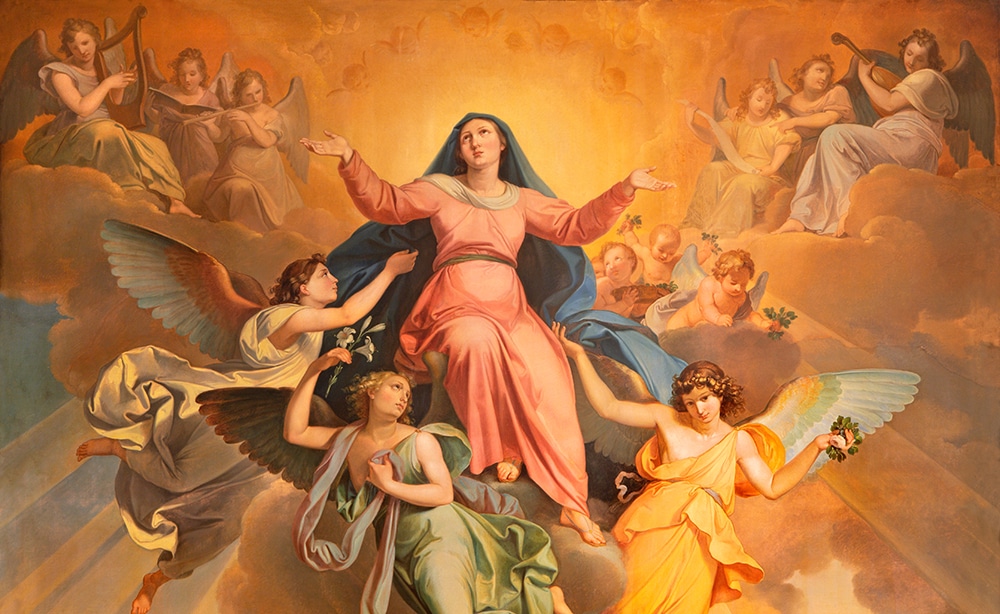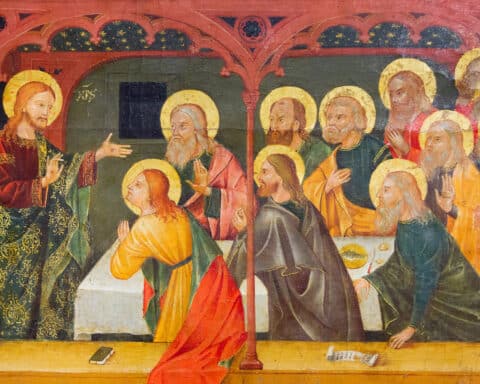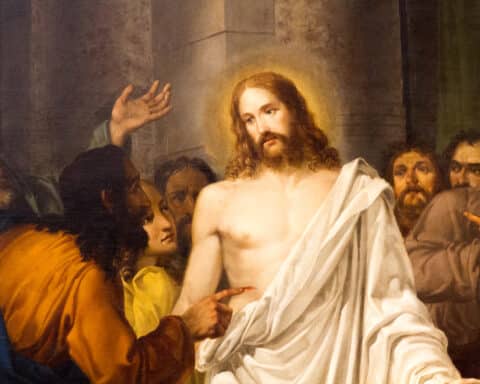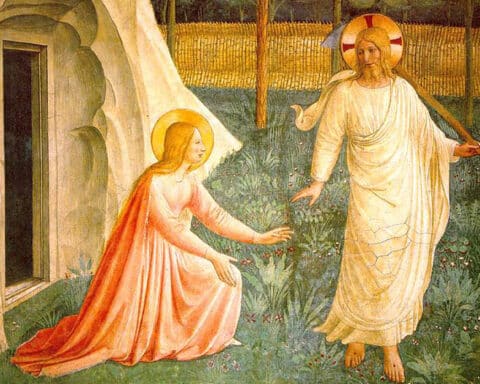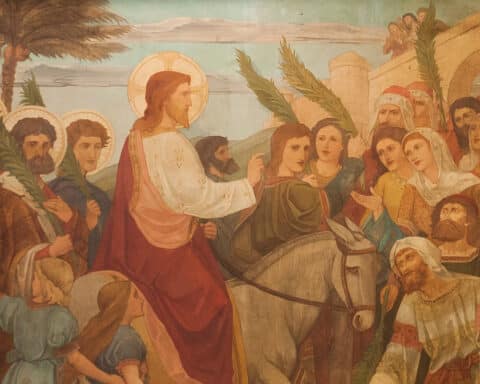Over the last three weeks, the Lectionary has immersed us in a reading of John 6. The liturgical year felicitously interrupts our reading of the bread of life discourse as we celebrate the great feast of the Assumption of the Blessed Virgin Mary. The interlude is felicitous because the Assumption like all Marian feasts is supremely Eucharistic.
Marian feasts in the Church often take on a kind of repetitiveness. The feast of Mary the Mother of God (Jan. 1), the Annunciation (March 25), the Assumption (August 15), and the Immaculate Conception (Dec. 8) become occasions to sing Mary’s virtues.
While the Mother of God is happy to hear our praises, the pedagogy of the Marian feasts requires attention to particularities. After all, what we celebrate this day is Mary’s bodily assumption into heaven.
| August 15 – Solemnity of the Assumption of the Blessed Virgin Mary |
|---|
|
Rv 11:19; 12:1-6, 10
Ps 45:10, 11, 12, 16
1 Cor 15:20-27
Lk 1:39-56
|
While the Church may be taciturn on whether Mary died (or as the East says fell asleep), we profess faith that her enjoyment of the eternal presence of God is embodied.
What we proclaim about the Blessed Mother, we ourselves dare to hope for. Eternal life with God is meant to be an embodied experience for men and women.
Our bodies are not obstacles, something we must defeat to enjoy the eternal presence of the triune God.
The Book of Revelation speaks of the dramatic pregnancy of the woman clothed in the sun. She wails in pain at the birth of her child.
But the birth is like no other. The devil imaged as a dragon stands before the woman, seeking to devour the child. The dragon is rendered powerless in the Book of Revelation, unable to consume the child.
Among all the books in Scripture, Revelation is especially attentive to imagery. The dragon is powerless before this embodied act of love of this mysterious woman. Evil is rendered toothless through the flesh and blood birth of Jesus Christ.
On this feast day, we hear from the Gospel of Luke. Mary has given her will over to the Father, letting the mystery of redemption be accomplished in her very body. She is pregnant with the Word made flesh, visiting her cousin Elizabeth who is also pregnant with John the Baptist.
Mary’s very existence, her whole life, is blessed because she carries within her the dayspring from on high. The light of life.
And this is where the Assumption and the Eucharist come together. Mary is the first tabernacle of the Word made flesh. But she is not the last.
Each Sunday (and often during the week), many of us receive in our hands or on our tongues Jesus Christ himself. In what looks like bread and wine, we are given the flesh of Christ for the life of the world.
We eat and drink his presence.
And like Mary, we are to become tabernacles of the Word made flesh after each Eucharistic liturgy.
God has chosen to redeem us, save us, renew us through our bodies. We eat and drink the presence of the living God because that is the destiny of our flesh.
This body, my body (no matter how fat or old), is meant to be taken up by the marvelous power of the triune God.
I am made for heaven not as an abstract mind, which thinks of lovely things.
No, the very tongue of this body was created to offer eternal praise before the Father forever and ever. Amen.
Every Sunday, this body of mine, my whole self, is taking up its Marian vocation every time I eat and drink the body and blood of Christ.
Let it be done to me according to thy Word.
Timothy P. O’Malley, Ph.D., is the director of education at the McGrath Institute for Church Life at the University of Notre Dame.

